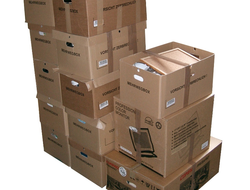Physical activity, exercise, and the environment (part 1)
Published: August 17, 2018
Our previous article “Physical activity, exercise and overuse injuries” highlighted overuse injuries which may occur as a result of participating in physical activity and exercise.
Despite the potential for injury, the health benefits associated with participating in regular physical activity and/or exercise as recommended by health experts generally outweight the disadvantages.
Leading a sedentary lifestyle is a health risk.
In addition to overuse injuries the environment in which you participate in physical activity and/or exercise also has the potential to adversely affect your health and offset some of the benefits you may gain.
In this article (part 1) we look at how the environment or location has the potential to adversely affect your health and how you can minimise this potential.
When discussing physical activity we include physical activities that you may participate in during the course of the day, as well as planned physical activities such as sports and exercise.
Sites of physical activity
Physical activity and exercise can take place in a myriad of locations. You don’t even need to step out of your front door to participate in physical activity.
Sites of physical activity and exercise include the following, but are not limited to:
- Your home
- Your garden
- The gym
- Sidewalks and roads
- The beach, waterways, and swimming pools
- Urban forest trails, ski slopes, skating arenas, and mountains and hills
- Sports fields
Potential hazards exist in all of these sites and the best way to minimise your risk of injury is to identify what these risks may be and then establish a plan of action that will help you avoid the hazards.
Your level of fitness and your knowledge about the physical activity or exercise you participate in contribute to your injury risk.
Your home and garden may appear to be safe, but activities you undertake such as those which involve climbing a ladder may increase your risk of falling. Other activities may require a fitness level greater than you imagine: shovelling snow for example.
Physical activity in the home
This includes housework, repair and maintenance of your home, use of stairs, preparation for special/unusual events, and planned exercise.
Many of these activities may appear mundane, but they require a basic level of fitness and/or knowledge of the task in hand which enable you to do them without tiring yourself too much which, in some cases, may increase your risk of injury.
You may be physically able to carry out household chores which occur regularly, but when it comes to...continue to the full article to learn more.
References
1.
American Council on Exercise (1996). Personal Trainer Manual. San Diego, CA: American Council on Exercise
2.
American Council on Exercise (1993) Aerobics Instructor Manual: San Diego, CA: American Council on Exercise


